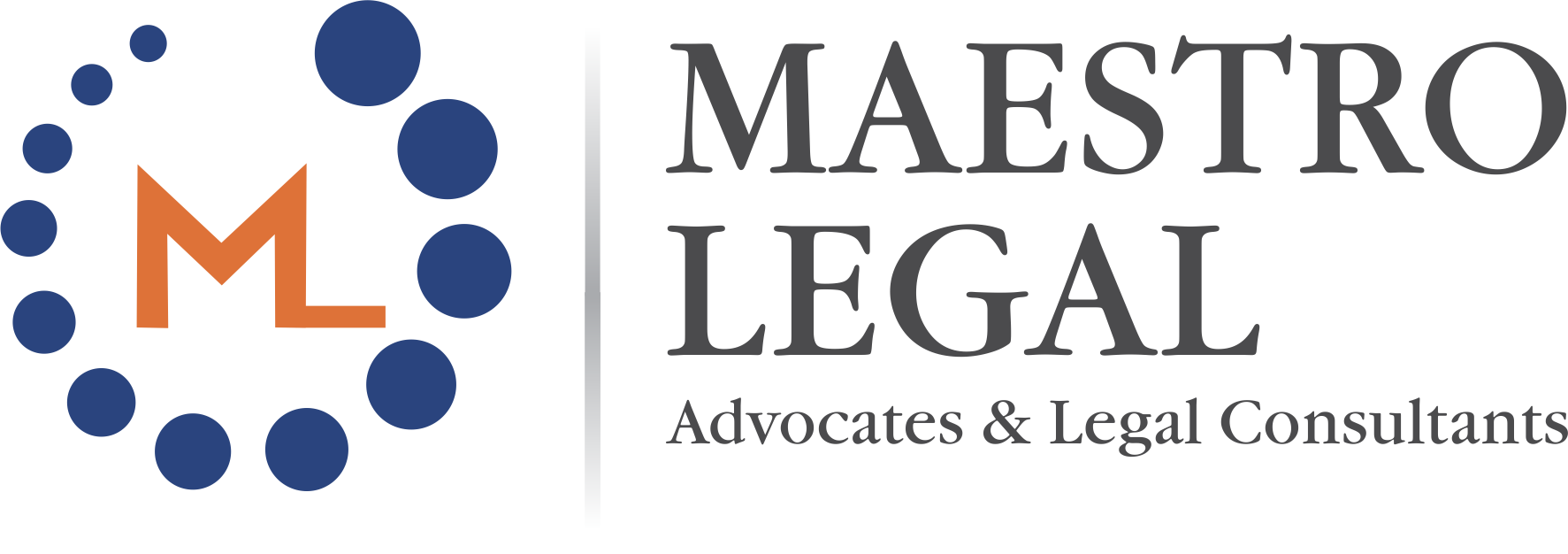- April 13, 2020
- Posted by: Maestro Legal
- Categories:

In recent decades the Indian economy has transformed into one of the largest and fastest growing economies in the world. Liberalized trade, investment and economic policies ensured a steadily growing market-oriented economy. Economic growth at this pace has been supported by innovation and technology development.
To reap the best result and to ensure the competitive economic efficacy a modern and effective competition Law regime is quintessential. Over the last decade Indian Competition law regime developed and always tried to run parallel with the development in the economy. In the light of enforcement experience achieved over the last decade certain issues also come to the light including new and emerging challenges. To tackle with the upcoming challenges in the enforcement of competition law framework the Competition Law Review Committee was constituted by the Ministry of Corporate Affairs. With the aid and advice the Indian Government introduced the draft Competition amendment bill, 2020 [1] in March this year. One of the proposed amendments in the Bill enlarged the definition of ‘cartels’ by explicitly bringing ‘hub and spoke’ cartels within the ambit of competition law framework. This was a welcome move with the growth of e-commerce marketplace. With the COVID-19 the growth of e-commerce is rapid pace and has seen an exponential increase in online marketplace platforms. These online platforms pose newer challenges to the competition authorities, since the detection of possibly illegitimate activities becomes more complex and difficult.
Ultimately, it falls on the authorities to adapt modern investigation methods and evolving jurisprudence to ensure that cartel formations are tightly monitored in the online space. This poses a relevant question as to whether, in the post-Covid period, the Competition Commission of India (CCI) is well prepared to resolve such a situation, in particular to implement new laws such as hub and Spoke cartels. This article seeks to find a response to this issue, firstly by examining the scope of ‘hub and spoke’ cartels in the Indian context, taking into account recent developments; secondly, by carrying out a cross-jurisdictional review to research the methodology taken by other jurisdictions; and finally, by suggesting the way forward.
Hub and Spoke Arrangement: Indian Context
Hub and Spoke is bit different form the usual understanding of a cartel. Section 2(c) of Competition Act[2] defined usual cartel as the existence of ‘an agreement among associations of producers, sellers, distributors, traders or service providers to limit control or attempt to control the production, distribution, sale or price of, or trade in good or provision of services’ forms an essential element for the constitution of a cartel.[3] Herein the phrase ‘by agreement amongst themselves’ as its fulcrum i.e. the agreement amongst the parties placed on same level of provision of service is quintessential.
On the other hand in a conventional sense, the ‘hub and spoke’ model is defined as an arrangement to exchange of sensitive information between competitors through third party that facilitates the cartelistic behavior of such competitors.[4] In hub and spoke cartel market players at the horizontal level (spokes) enter into an agreement, tacit or explicit, to communicate the sensitive information through a common vertical player, referred to as ‘hub.[5] Hubs are not directly involved in its activities, but still it acts as a conduit to facilitate the cartel. An information is transferred from the spokes to the hub, which is then used by the other spokes; Therefore, mechanism of an information exchange is formed which facilitates cartel formation.
The competitors (spokes) typically convey the pricing to a single ‘hub’ usually at the discretion of the hub itself, which may or may not be their rival, but a firm (other spokes) with vested interests in the neighboring/vertical market. This usually happens when the ‘hub’ is a large company with considerable market power in a particular region, so much so that it is able to monitor the behavior of its suppliers/buyers, etc., and suppliers/buyers will hardly have any choice to opt out if they need to have any business with the hub.
The arrangement takes place by individual agreements with each spokes with the same center. Therefore, they are conscious for sure that the hub will do the job for them, even though the spokes never talk. This is more like a ‘concerted practice/orchestrated conspiracy’ than a mere cartelisation arrangement. For example, by giving them independent letters, a strong toy retailer chain in a region sets the price for all toy manufacturers in order to eventually derive super-normal profits by eliminating price competition. In such a scenario, if the spokes have the information that all other spokes still behave similarly, the toy retailer and the producers are members of the ‘hub and Spoke cartel.’
The internet is one of the most contentious ways of hub, with the proliferation of digitization and advancement of platform-based services, offering an environment for different spokes to participate in a cartel-like formation in a way that escapes scrutiny of competition law. For example, in Samir Agrawal v ANI Technologies Pvt[6], one such matter came up for CCI’s consideration. Ltd, where it was determined that the use of the same cab aggregator sites such as Uber and Ola by individual drivers using the same or identical price discovery algorithms would not constitute cartelization under the 2002 Competition Act. The case went to the National Company Law Appellate Tribunal (NCLAT), in which the NCLAT held that because Ola and Uber are working on price algorithms and the drivers are not acting in the capacity of workers, they are not acting as a center and have Spoke and thus concluded that there is no cartelization.
While hub and Spoke cartels operating with different price algorithms tend to be free of competition law issues, due to factors such as buying the same algorithm from the same IT firm, similar price algorithms which end up in concerted action anyway. Since large ranges of sectors are equally put in terms of their activities, to accommodate potential instances, an inapt precedent such as the one discussed above must be revisited.
In addition, since new business models and an expanded use of internet channels are likely to mark the post-Covid period, such a view only limits the CCI’s ability to look beyond what is obvious on the face of it and creates a challenge in implementing the available jurisprudence in practice. This allows the CCI to figure out a process such that a tougher criterion is addressed in such cases. An exploration of the approaches of other jurisdictions to cartel determination may give a bird’s eye view of the generally accepted procedures and help define methods of investigation suitable for Indian condition
Position in the UK and the US
The US courts while assessing the ‘hub and spoke’ model have concluded that the ‘rim’ connecting the horizontal spokes, who otherwise are just individual parties to parallel vertical agreements, draws the line between presumptively legal vertical agreements and illegal horizontal agreements and that it is the rim that establishes the agreement needed to conclude a per se violation of s 1 of the Sherman Act.[7]
We will first look at the legal assessment adopted by the United States (US), which has a long history of jurisprudence in proving the illegality of a ‘hub and spoke’ system, in order to better understand the approach to hub and Spoke cartels. By adopting a ‘inference standard’ that is focused on maintaining a ‘rim’ around the unconnected spokes, the US has repeatedly dealt with such situations. Under such agreements, the US authorities recognize the lack of direct contact and instead offer due credence to circumstantial evidence and the existence of ‘plus factors’ to infer the establishment of a center and a Spoke cartel.
These plus factors are essentially additional factors which are analyzed by the authorities to draw a decision and include factors such as the type of shared knowledge, the consequences of sharing, and the structure of the business. Various cases such as the case of Interstate Circuit, the case of Toys “R” Us (TRU) and the case of Parke, Davis & Co. applied the inference standard by analyzing the plus factors present in an agreement such as the exchange of individual emails, unanimity of action, lack of benevolent intent, a sudden shift of policy, and the subtle diplomacy adopted by various undertakings to sustain the flow of price information between different market players.
On the other hand, the United Kingdom follows the ‘concerted practice’ model, which is ‘a method of collaboration between undertakings that deliberately substitutes practical cooperation between them for the risks of competition without having reached the stage at which a so-called agreement has been properly concluded.’
In addition, under such a procedure, a reciprocal contract among market players is required. To this end, the exchange of information by one party and the receipt by the other party of that information, or at least the approval by the other party of that information, are necessary to satisfy the criteria of concerted practice. Subsequently, in the Replica Football Kit case and the Toys case, the Competition and Markets Authority (CMA) used this model and defined a criteria for the determination of a concerted practice.
According to above mentioned criteria motives, actions, and circumstances that make the presumption that a deliberate action has taken place, and ultimately call it the “state of mind” test, need to be connected to each other for potential pricing intentions.
The Way Forward
It is important to understand that the hub and Spoke cartel is a subtle type of anti-competitive activity that, if not defined with sufficient expertise, may go unrecognized. In principle, it can work in a mask that avoids the attention of regulatory authorities. Therefore, holding a check as to when legitimate business talks cross the line and become illegitimate is important. At the same time, raising the threshold to such a degree that necessary and innocent exchanges are covered is equally relevant.
A thorough analysis of the working and anti-competitive impact of the hub and scope cartel will go a long way in the materialization of a safe and competitive market to achieve the said ends. Therefore, when considering different business structures, particularly in the case of the digital marketplace, it becomes imperative to take a broader view. One cannot stress sufficiently that cartel inquiries must be case-specific and before coming to a conclusion, the ‘true relationship’ must be ascertained. It is also interesting to keep this method as objective as possible, while at the same time minimizing the potential costs and increasing performance.
Since their invented system, i.e. inference process, concerted practice and state of mind, has been largely successful in prosecuting cartels, a cue can be taken from the US and the UK; its implementation can be checked in the Indian context. It remains a matter of scholarly debate as to whether the rule of reason should be favoured over the per se rule, no matter what approach the CCI takes in determining upcoming cartel matters. The authors accept that the rule of reason provides a better picture of the potential harm that can be caused by a hub and a Spoke cartel and helps to establish a more practical standard for recognizing criminal cartels while at the same time protecting healthy enterprises. However, it is important to test a change of approach against time.
[1] Draft Competition (Amendment) Act, 2002 <http://feedapp.mca.gov.in/pdf/Draft-Competition-Amendment-Bill-2020.pdf> accessed on 08 February 2021.
[2]Competition Act, 2002
[3] Consumer Online Foundation v Tata Sky Ltd. & Ors (Case No. 2/2009) CCI.
[4] In Re: Samir Agrawal v ANI Technologies Pvt Ltd (Case No. 37/2018) CCI.
[5] ibid
[6] Supra 4
[7] OECD ‘Roundtable on Hub-and-Spoke Arrangements – Background Note’ 2019 page 18.
